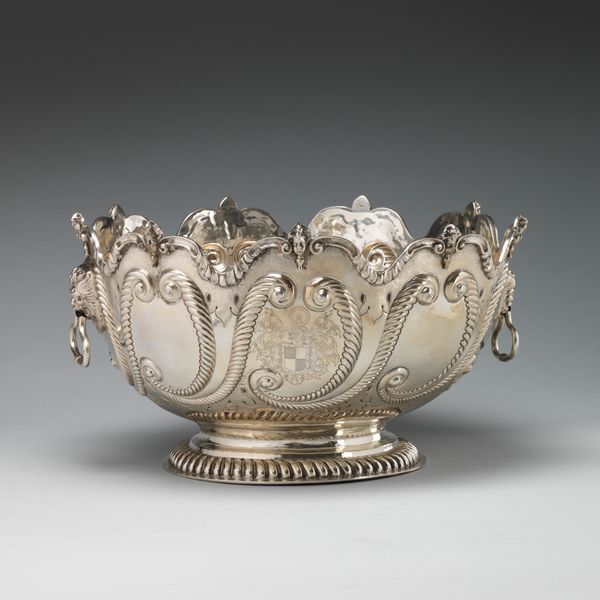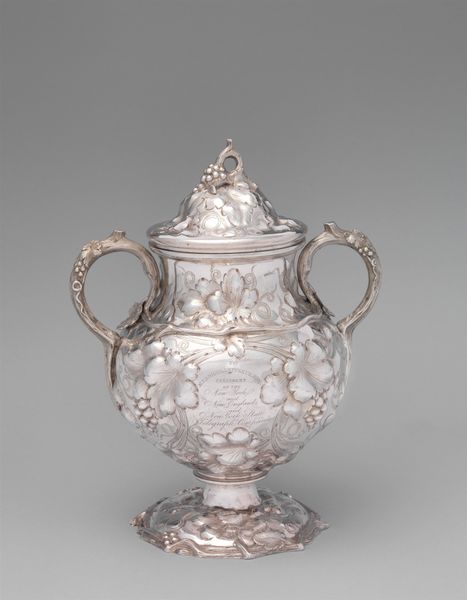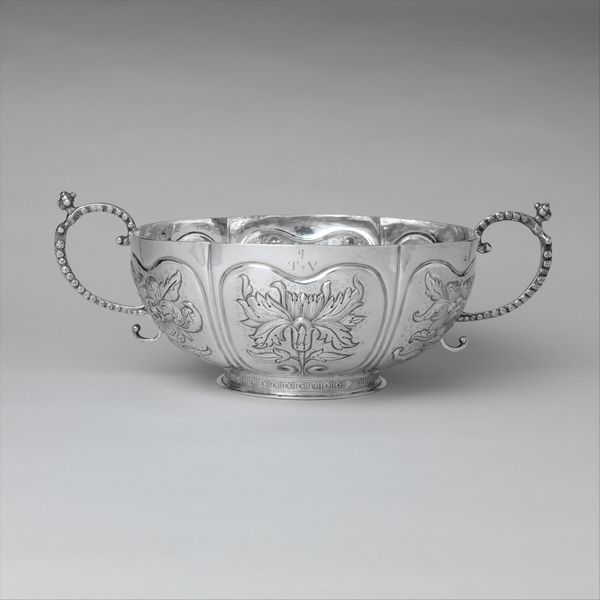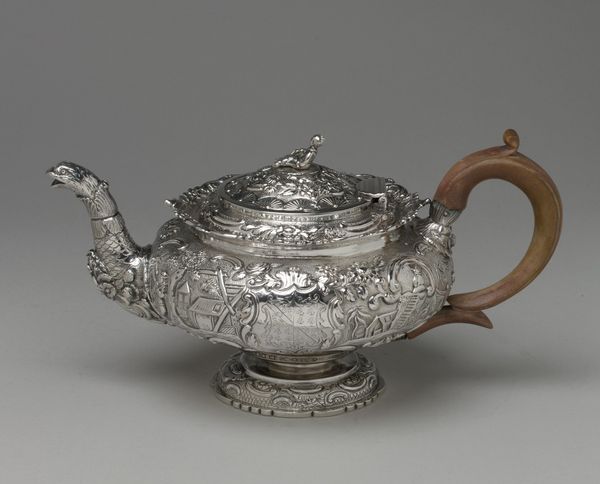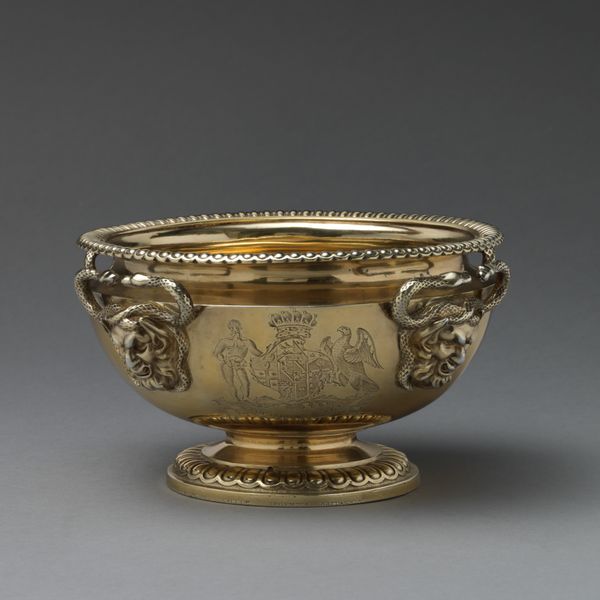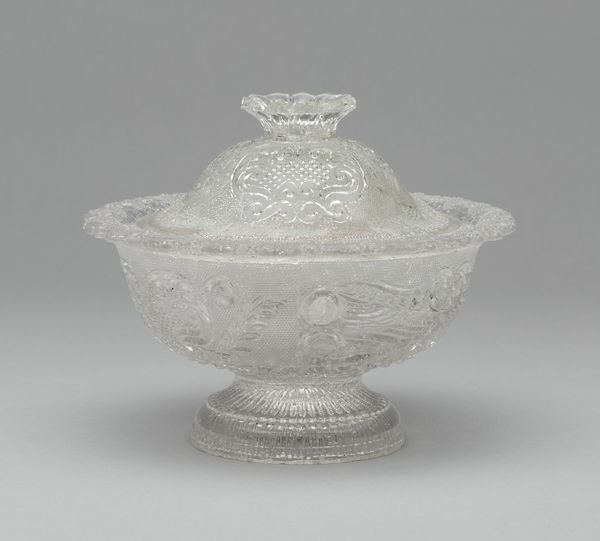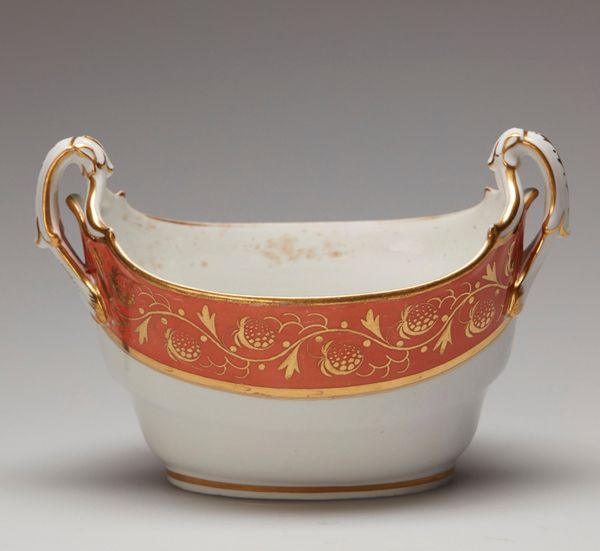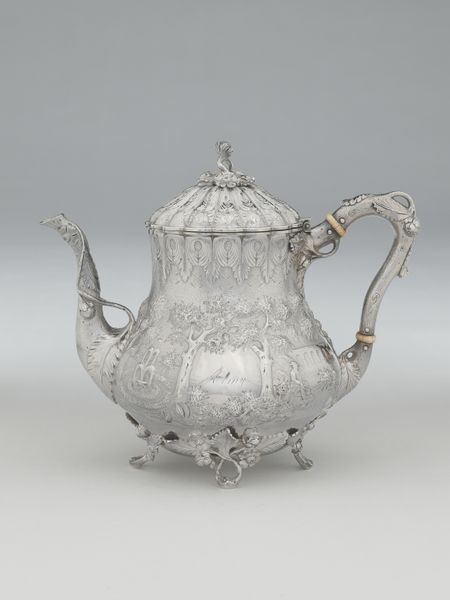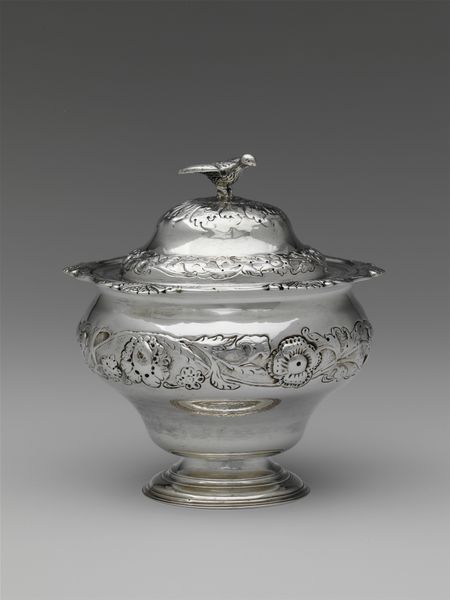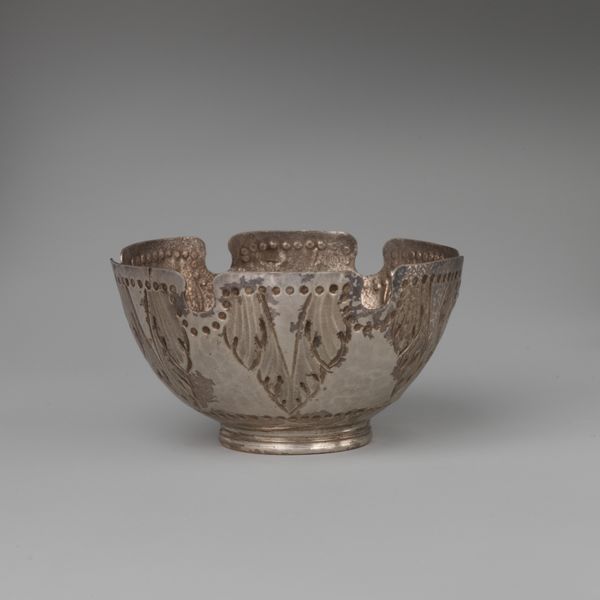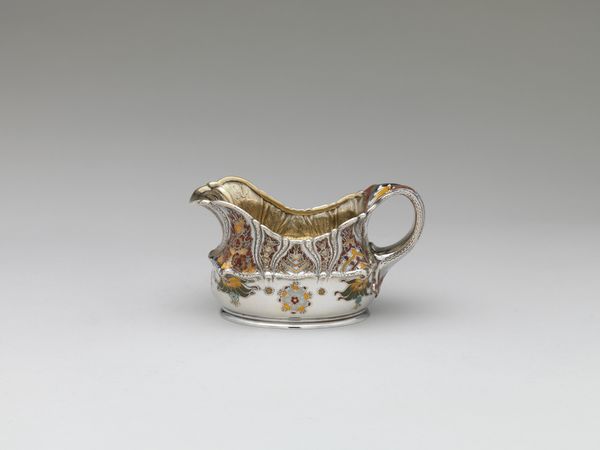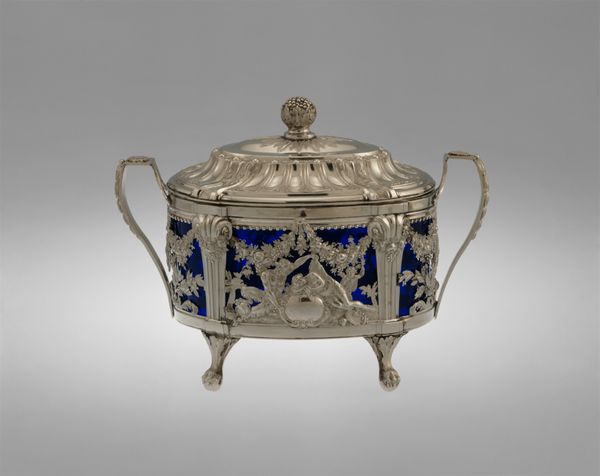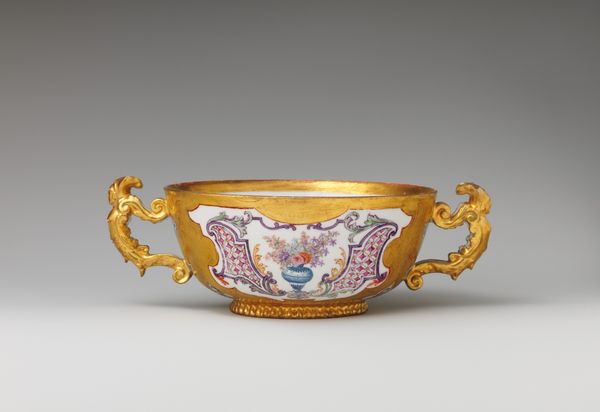
metal, glass, sculpture
#
metal
#
mannerism
#
form
#
11_renaissance
#
glass
#
sculpture
#
ceramic
#
decorative-art
Dimensions: Width: 9 in. (22.9 cm)
Copyright: Public Domain
Curator: The opulence! It radiates power, wouldn't you agree? The refractive play of light across this crystalline "Bowl" evokes aristocratic excess. Editor: Excess for sure. But to me, it mainly speaks of craft. The piece, created sometime between 1550 and 1575 by the Sarracchi Brothers, is a masterful manipulation of glass, metal, and sculptural form. What a dazzling level of refinement! Curator: Absolutely! Imagine the social context of owning this in the late Renaissance! It surely signified not just wealth but refined taste. It says, "I understand beauty, power, and privilege.” Editor: Yes, the commission speaks of elite patronage, definitely. But also consider the labor. Look at the meticulous engraving across the rock crystal. How long did it take to achieve that symmetrical embellishment? The social conditions of production must have involved hierarchies of labor to allow such work. Curator: Certainly, those artisans weren't exactly equals to their patrons, no. But there’s something about the bowl itself—that central rise like a chalice nested inside a decorative serving vessel. I think about the relationship between religion, power, and feasting in this era. The visual pun elevates a commonplace form to something far more significant. Editor: I see it as a confluence of decorative-art and mannerism; notice that calculated disequilibrium—the way the handles mirror one another without truly matching and the etched patterns swarm but never settle? Those choices aren't incidental. The artist wanted to project lavishness in this centerpiece. Curator: That intentional “disturbance” is part of its Mannerist charm, isn't it? Even its symmetry, as you mentioned, alludes to established conventions while subtly undermining them. Editor: Right, this bowl exists in a very particular place, blurring that boundary between object and art. It challenges conventional thinking around the nature of craft, labor, design, and materiality in late-Renaissance Europe. Curator: Looking at the larger history and all these points converging – the economics of display, its ties to status, gender, and even theological ideas – really bring out its relevance now. Editor: Definitely. Its meticulous crafting embodies labor and history that persists in today's consumerism, raising important concerns about craft, manufacturing, class, and artistry that endure.
Comments
No comments
Be the first to comment and join the conversation on the ultimate creative platform.
